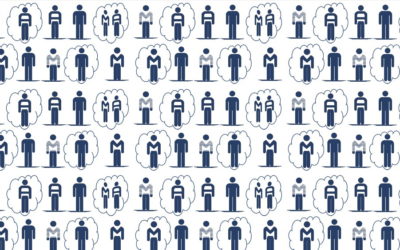It may seem, when searching for training solutions, that the options are either Do It Yourself, represented here as Bleriot crossing the Channel in his own machine, or a low-risk, catalog-based solution – the P&O Ferry. Mega exciting on the one hand , but will it get you to where you want to go? As predictable as the tides on the other, but can such a standardized package take you to the leading edge of the subject?
Fortunately, there are alternatives. Training can be created using mature materials, components and processes from various sources, allowing you to innovate at both the process and the subject matter levels. STMicroelectronics took this approach recently when producing a one-year conversion program for engineers moving into Functional Verification roles – the first major achievement of the STMicroelectronics Verification School!
Functional Verification is a crucial, specialized aspect of integrated circuit design and could be considered a profession in its own right. ST had the problem that it could not find a training product that would help their engineers move into this profession, even though there are many courses available on specific tools and verification methods.
In the end, the company was able to create a solid product in record time by collaborating with AEDVICES on classroom and workshop content, with Cadence on eLearning + tool workshops and with ICONDA on learning objectives, processes and measurement. Something like a modern light aircraft with multiple options … and fun to fly!
According to Christophe Chevallaz of ST, the manager of the program: “There are two great advantages of this approach. First, by weaving multiple training threads around participants’ everyday work, we ensure that they fully integrate learning into their work practices. Second, since a given topic is covered in different ways by different sources, we have additional flexibility to cope with any problems that arise. If someone didn’t understand a particular lab, then maybe an eLearning module will help; if they have an issue on a project, then perhaps their tutor can sort them out, and so on.”
The high-level lessons that come out of this program are interesting as they can be related to the construction of almost any training …
For example, the ST program is made up of a rich set of complementary components: local and remote live sessions, workshops, eLearning, tool training, tutoring/mentoring, hotline support, exercises, labs and checkpoints (individual interviews). Organizing these components into a coherent Learning and Development system is tricky, as is keeping the system stable and on track! If you can imagine a flight control panel with feedback and controls to adjust the system’s balance between knowledge and skills acquisition, face-to-face and remote learning, tools and methodology training, internal and external support (ST experts versus consultants and suppliers), guided and independent work, self-assessment and formal progress checking … then you start to get an idea of the challenge J *
Learning Objectives are key to managing this.
Learning Objectives (LOs) are used throughout the program in different ways. They are used to track progress, of course, using post-session, self-assessment questionnaires (we use levels 1 and 2 of the Kirkpatrick models for this). In the ST program, the LOs are written in the first person, as the following examples show:
- I can explain the reasons for separating design and verification activities and what this separation means in practice.
- I can use a SystemVerilog interface to connect modules together
- I’m able to use SystemVerilog classes to architect my testbench
- I can use random variables to create interesting valid scenarios
- I’m able to implement simple coverpoints to measure my test progress
- …
In addition to progress tracking, LOs are also the reference around which the tutoring and projects are organized. Bear in mind that not only the students but also the tutors are learning from the program. Although tutors are familiar with most of the program content, they acquire and refine teaching skills by working with their students. In this work, LOs provide them with an essential reference. When tutors are asked to provide a project for their students, for example, the request is for a project that will address specific Learning Objectives. We do not require that all the specified LOs are covered, but it is important to identify those which are. Once the projects are complete, we then assess progress with respect to the LOs selected for each project and this provides valuable feedback to both the program organizers and the tutors.
Overall, our focus on Learning Objectives allowed us to put at least as much focus on the learning process as on the subject matter.
As far as the learning process was concerned, we found ourselves spending considerable time working on the integration of learning in individual projects, tutor-supervised professional projects, take-away exercises and traditional labs. For the content, we were driven to rework certain modules to take into account the progress that students were making towards their LOs. For both the process and content aspects of the program, we found that the backgrounds of the students had a considerable influence on what had to be done. There was a clear split between people with predominantly hardware versus software backgrounds and some noticeable differences associated with seniority.
Of course, ‘in-flight adjustments’ are routinely made in most trainings. The key difference in the ST program, however, was the systematic nature of the adaptative process. Having explicit Learning Objectives at the start of the program was key, even though they evolved along with everything else! Then the regular use of these LOs to drive and measure multiple aspects of the program enabled a level of constructive adaptability that would not otherwise have been possible.
It brings to mind the phenomenal check-and-correct systems used in avionics and which allowed us to get from Bleriot’s machine to the ultra-reliable contraptions that we fly in today. So, whatever you do when deciding on your team’s next training course, make certain that such a system is in place!
* Please note that the Covid crisis occurred right in the middle of the program. We coped fine with the additional constraints that the virus introduced, adapting the program while respecting its Learning Objectives, as described above. However, we do not wish to dwell on any Covid-specific aspects of the experience in this article.



